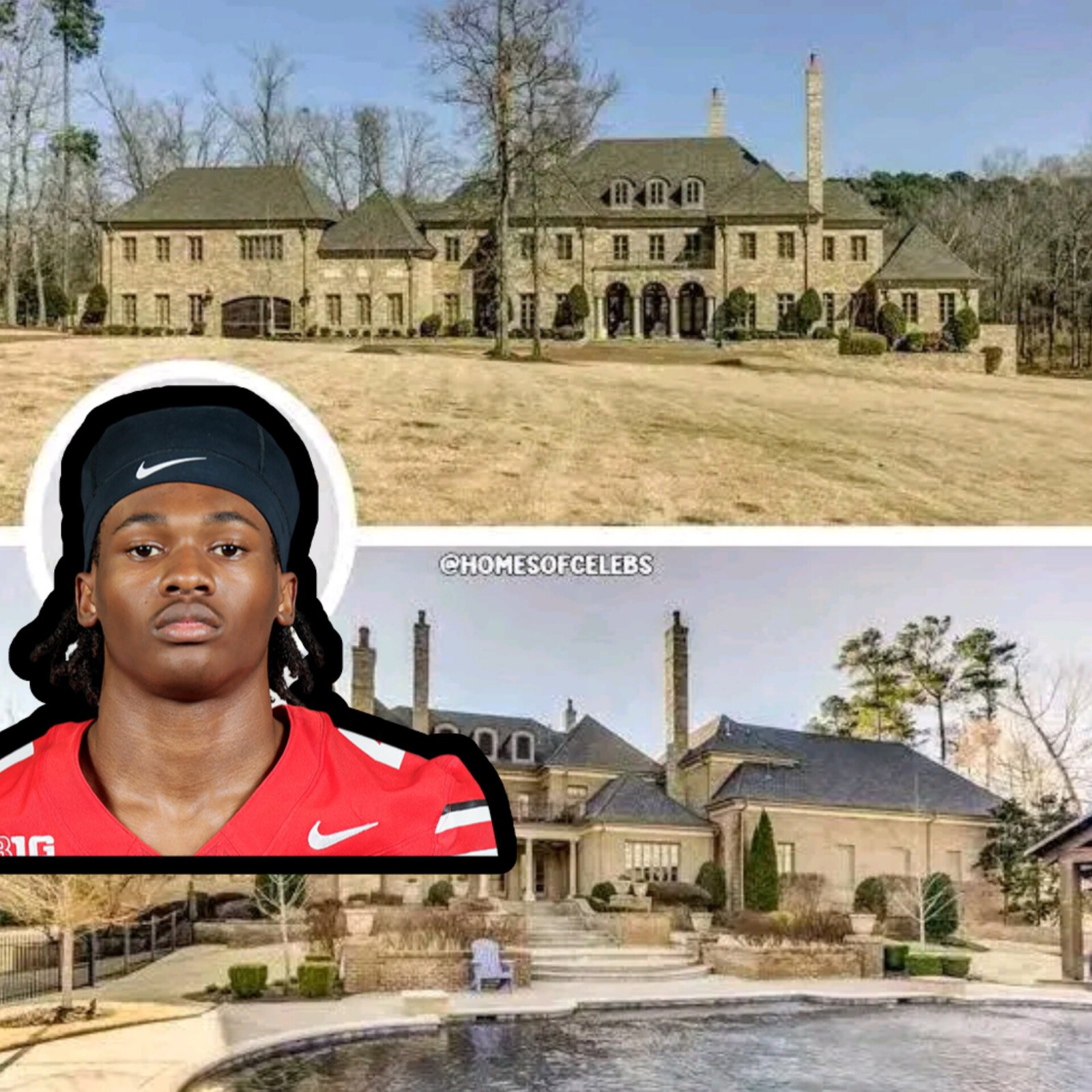**🔥 BREAKING: Ohio State Star Jeremiah Smith Drops $3.6M to Transform House Into Exclusive Shelter for BLACK Homeless Youth – A Game-Changer for Ohio! 🏈✊🏾**
In an era where athletes are increasingly leveraging their platforms for social change, Ohio State Buckeyes’ standout wide receiver Jeremiah Smith has taken a monumental step forward, committing $3.6 million to transform a residential property into a specialized shelter exclusively for Black homeless youth in Ohio. This bold move is not just a charitable act—it’s a direct response to the systemic inequities that disproportionately affect Black communities, particularly young people facing housing insecurity. Smith’s initiative has sent shockwaves through both the sports world and social advocacy circles, positioning him as a leader in athlete-driven activism. The project, which is already underway, is expected to open its doors by early 2025, offering more than just a roof over heads—it’s designed to provide resources, mentorship, and long-term stability for those who have been marginalized and overlooked.
The inspiration behind Smith’s decision stems from his firsthand experiences with the struggles faced by Black youth in Ohio. Growing up, he witnessed friends and peers grapple with housing instability, often slipping through the cracks of an overburdened and underfunded system. Even as his football career began to skyrocket, Smith never forgot where he came from. “I’ve been blessed with opportunities, but I know not everyone gets that same chance,” he said in an emotional press conference. “This shelter isn’t just about giving people a place to sleep—it’s about giving them hope, resources, and a real shot at a better future.” His words resonated deeply, sparking conversations about the role of athletes in addressing societal issues beyond the field.
The shelter itself is being designed with intentionality, aiming to break the cycle of homelessness rather than simply providing temporary relief. Unlike traditional shelters, which often operate on a first-come, first-served basis with limited long-term support, Smith’s facility will focus on holistic care. Plans include partnerships with local educators, mental health professionals, and career counselors to ensure residents have access to the tools they need to rebuild their lives. Additionally, the space will feature recreational areas, study halls, and even a small recording studio to encourage creative expression—a nod to Smith’s belief that every young person deserves the chance to explore their passions.
The decision to specifically serve Black homeless youth has drawn both praise and scrutiny. Advocates argue that Black communities face unique barriers in accessing housing assistance, from racial discrimination in rental markets to systemic biases in social services. According to recent data, Black youth are significantly overrepresented in homeless populations across Ohio, yet they are often underserved by existing programs. By creating a space tailored to their needs, Smith is addressing a critical gap in the state’s support infrastructure. “This isn’t about exclusion—it’s about equity,” explained Dr. Alicia Reynolds, a Columbus-based sociologist who consulted on the project. “When you have a group that’s consistently falling through the cracks, sometimes you need targeted solutions to level the playing field.”
Of course, not everyone has welcomed the initiative with open arms. Some critics have questioned whether a shelter serving one demographic could be seen as divisive, while others have argued that $3.6 million could have been distributed across multiple organizations. Smith, however, remains unfazed. “I’ve heard the noise, but I’m not doing this for applause or approval,” he said. “I’m doing it because it’s right. If people want to criticize me for helping kids who look like me, that’s on them.” His unapologetic stance has only galvanized his supporters, many of whom see his commitment as a refreshing departure from performative activism.
The financial aspect of the project has also turned heads. At just 20 years old, Smith’s $3.6 million investment is a staggering sum, especially for a college athlete who has yet to sign an NFL contract. While Name, Image, and Likeness (NIL) deals have allowed him to amass significant earnings, this move demonstrates a willingness to put his money where his mouth is. Sources close to Smith reveal that he has been quietly planning this venture for over a year, working with financial advisors and real estate experts to ensure the funds are used effectively. “This isn’t some impulsive donation,” said a family spokesperson. “Jeremiah has done his homework. He wants this to last.”
The broader implications of Smith’s actions are impossible to ignore. In recent years, athletes like LeBron James (with his I PROMISE School) and Malcolm Jenkins (through his social justice initiatives) have set powerful precedents for how sports figures can drive tangible change. Smith’s project adds to this growing legacy, proving that the next generation of athletes is ready to carry the torch. What sets him apart, though, is his focus on homelessness—an issue that rarely receives the same attention as education or criminal justice reform. By shining a spotlight on youth housing insecurity, he’s forcing a much-needed conversation about a crisis that often goes unseen.
Local leaders in Columbus have already begun rallying behind the initiative. Mayor Andrew Ginther praised Smith’s vision, calling it “a model for how public-private partnerships can address community needs.” Meanwhile, grassroots organizations that have long fought for housing justice see the shelter as a potential turning point. “We’ve been screaming about this for years,” said Marissa Coleman, founder of a Columbus-based homeless advocacy group. “Having someone with Jeremiah’s platform step up like this? It’s a game-changer. It forces people to pay attention.”
As construction progresses, anticipation continues to build. The shelter’s location, a once-abandoned property in a historically underserved neighborhood, is being revitalized with input from the very community it will serve. Smith has emphasized the importance of local involvement, hiring Black-owned contractors and consulting with former homeless youth to ensure the space meets their needs. “This isn’t my shelter—it’s theirs,” he said. “I’m just the one funding it.”
Looking ahead, the question isn’t just whether this shelter will succeed—it’s whether it will inspire others to follow suit. Smith has already hinted at plans to expand the model to other cities if proven effective, and fellow athletes have reportedly reached out to learn how they can launch similar projects. In a time when cynicism often overshadows social progress, Jeremiah Smith’s $3.6 million bet on Black youth is a powerful reminder of what’s possible when talent, resources, and compassion collide.
The story is still unfolding, but one thing is clear: Jeremiah Smith isn’t just playing for touchdowns. He’s playing for lives. And in the process, he’s redefining what it means to be a champion.





